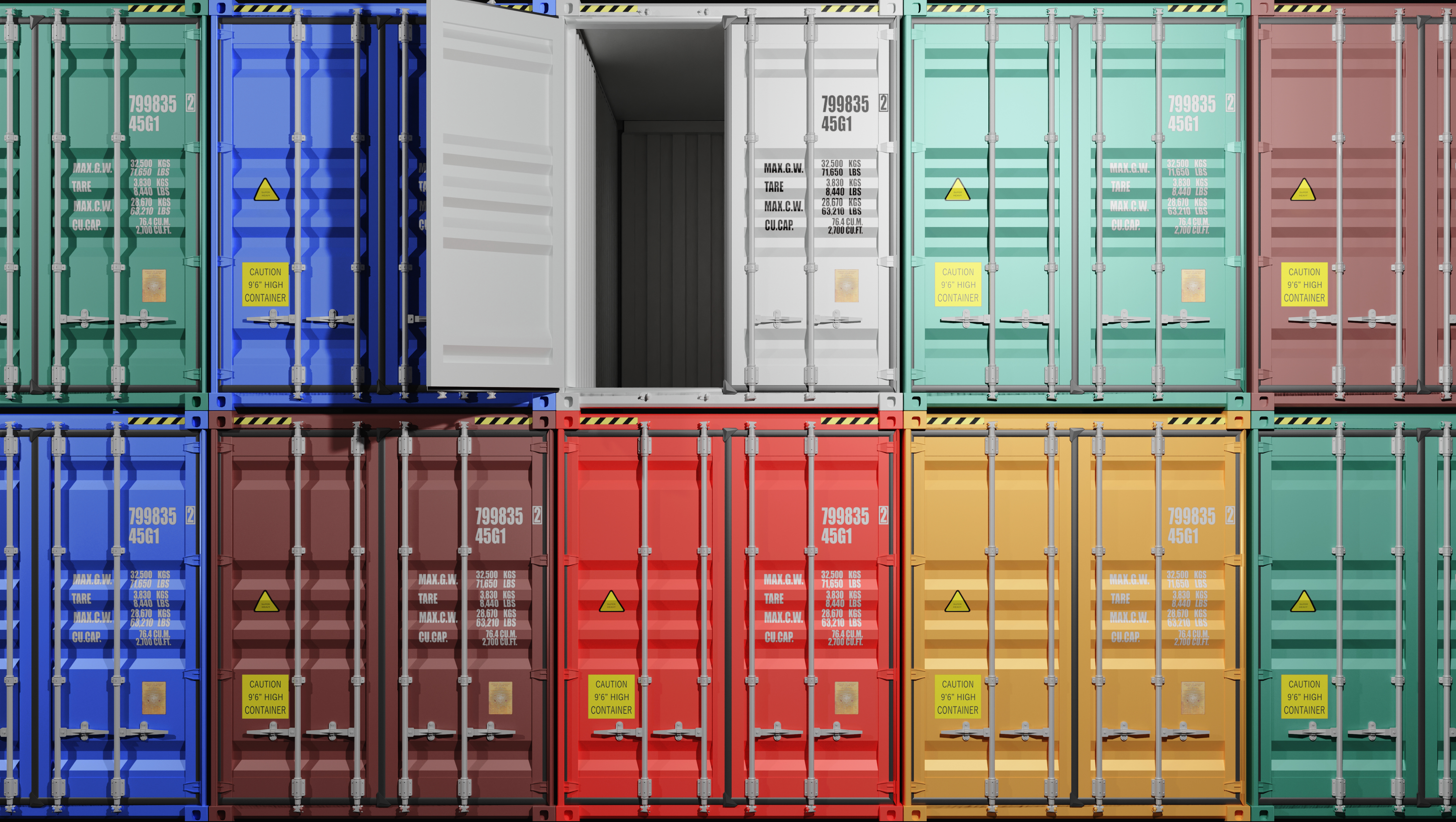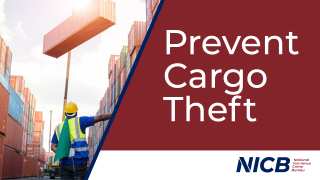Cargo Theft
Cargo theft isn’t just stealing property. It threatens national supply chains, inflates consumer prices, and perhaps most importantly, funds broader criminal networks that do untold damage to our nation and our citizens. The confluence of the profitability to fund these criminal enterprises, tariff uncertainty, enhanced technology to defeat law enforcement, and geopolitical circumstances has led to an increased threat on the global supply chain.
Cargo theft losses increased by 27 percent in 2024 and are predicted to rise another 22 percent in 2025.
Cargo Theft at a Glance
- Estimated annual losses of up to $35 billion*
- Top stolen goods: Electronics, food and beverage, pharmaceuticals, apparel and footwear, alcohol and tobacco, building materials
- Most impacted states: California, Texas, Illinois, Florida, and Washington
- Most frequent timing: Holiday weekends, Q4 shipping season
- Most common locations for theft: Truck stops and parking lots, distribution centers and warehouses, ports and rail yards, highways and rest areas
- Estimated average value of individual theft: Greater than $202,000
Advocating for Federal Support
NICB stands on the forefront of all forms of insurance-related crime and fraud, and that includes cargo theft. On July 15, 2025, NICB President and CEO David J. Glawe testified before the United States Senate Committee on the Judiciary outlining the dangers of cargo theft. While the costs to consumers are real, stolen goods are often used to fund criminal enterprises including drug trafficking, arms dealing, and terrorism.
In his testimony, Glawe stressed the importance of collaboration between both the private and public sectors— from law enforcement, to policy makers, to impacted industries— to protect American consumers. He also called for the advancement of the Combating Organized Retail Crime Act (CORCA), which strengthens federal criminal statues to confront interstate and transnational organized theft.
Common Cargo Theft Schemes
As with most crimes, there are many ways cargo theft is committed. Below are a few of the most common types of cargo theft:
- Straight Theft – Physically stealing goods from unattended vehicles or facilities
- Pilferage – Stealing part of a load without taking the whole shipment, which often goes unnoticed until delivery when the thieves are safely gone
- Strategic Theft (Fraudulent/Fictitious Pickup) – Criminals pose as legitimate carriers or logistics companies (sometimes with fake documents or stolen carrier identities) to fool shippers into handing over goods
- Cyber-Enabled Theft – Using hacked logistics data to intercept or reroute shipments
- Hijacking – Forcibly taking control of a vehicle in transit
- Thefts for ransom schemes – Taking of cargo and holding it ransom for payment
As evolving business technology has made transporting goods from location to location faster and more efficient in many ways, it has also created gaps in security that allow criminals to exploit cargo delivery systems. Increasingly, this digitalization can be exploited to facilitate fraudulent or fictitious pickups, fictitious carriers and cyber-enabled logistics manipulation.
Targeted Copper Thefts on the Rise
A trend analysis by CargoNet found metal thefts are on the rise, with almost 7-in-10 thefts targeting copper. As a key element in transportation, power, and clean energy revolutions, copper demand and prices have steadily increased throughout 2025, inspiring thieves to take action. Criminals gain access to copper cargo by impersonating legitimate motor carriers. They re-broker the load to an innocent, legitimate carrier with instructions to deliver the shipment to a location other than the original address. Thieves then load copper into their own trucks, disable GPS trackers, and disappear.
Member companies, submit all cargo thefts into ClaimSearch to help combat the rising impact of this crime.
Understanding Cargo Theft Networks
Who are the criminals that commit cargo theft? Most high-value thefts are not committed by lone actors or small groups of opportunistic thieves. Rather, these crimes are committed by well-funded, sophisticated criminal organizations. These groups operate across state and country borders, especially in the U.S., Mexico, and South America, and often use cargo theft profits to fund other illicit ventures, including drugs, weapons, and terrorism.
Cargo thieves are technologically savvy and logistics-minded, using their prior experience (or insides sources) to locate and exploit vulnerabilities within the supply chain system. They typically operate in crews with a driver (who may or may not be knowledgeable of the crime), a logistics coordinator, a fence to sell the goods, and lookouts or scouts. These crews do their best to look legitimate and professional to avoid suspicion until they are safely away with their prize.
Who Investigates Cargo Theft?
The National Insurance Crime Bureau is a leading voice in the fight against cargo theft. We partner with:
- Insurance company SIUs to help identify suspicious claims
- Law Enforcement, including local, state and federal cargo theft task forces, which often have representatives from the Federal Bureau of Investigation (FBI), the Department of Homeland Security, Homeland Security Investigations (HSI), United States Customs and Border Protection, the Department of Transportation, Office of the Inspector General, and the Federal Motor Carrier Safety Administration
- Private Sector, including shippers, third party logistics companies, insurers, and investigative vendors
“Cargo theft has an incredible impact on our society. When manufacturers are forced to account for stolen merchandise, the costs are passed along to the consumer. NICB works with the transportation industry, insurance carriers, and law enforcement to share data around these crimes and help spot patterns that can find criminals and deter this crime.”
David J. Glawe, NICB President and CEO
How to Prevent Cargo Theft
The best way to stop cargo theft is through education and deterrence. Once a theft occurs, it is very difficult to recover the stolen property and prosecute the perpetrators. NICB recommends the following steps to protect the supply chain from cargo crimes:
| Screen every employee | Conduct a background check on every employee, including those with access to the shipping information. |
|---|---|
| Train employees on the signs of cargo theft | Provide security training for every employee. Educate truck drivers to be aware of their surroundings and to contact their respective dispatch or law enforcement if they observe or suspect being a target of a cargo crime. |
| Check transportation partners before hiring | They should share your security philosophy. Use freight brokers and transporters who do not permit double brokering. Ensure that only you as the shipper can make re-routing decisions, not the broker, transporter dispatch, etc. The change order can only originate from the owner of the cargo. Be cautious and scrutinize emails to ensure that they are legitimate and not altered. Ensure phone numbers used by individuals within the supply chain are valid and if determined to be Voice Over Internet Protocol take additional vetting procedures. |
| Implement in-transit security measures | Cargo theft can be pre-planned or opportunistic. It may include an inside informant who follows the goods and ultimately leads criminals to quickly dispose of the cargo. Thieves will often wait outside known shipping facilities waiting for drivers to stop. Best practice is to park in known secure locations and avoid “hot spots,” or areas known for increased frequency of cargo crime. |
| Keep a vigilant eye | Trucks and cargo are most vulnerable when sitting idle. Include countersurveillance – observance and 360 visibility to your property and surroundings – in the duties of your security guards. |
| Take advantage of technology | Utilize layers of security: ensure the perimeter, entrances, building doors, and windows are well lit. Install alarm surveillance systems, vehicle and cargo tracking, immobilizers, and advanced security seals. |
| Conduct audits and stay vigilant on Intelligence | Regularly look for gaps in shipment protection and stay informed on how technology enables theft throughout the supply chain. Join regional or national associations focusing on cargo crimes such as the Southwest Transportation Security Council, the Midwest Cargo Security Conference, or the Transport Asset Protection Association which has promulgated industry standards to prevent and deter cargo crime. |




